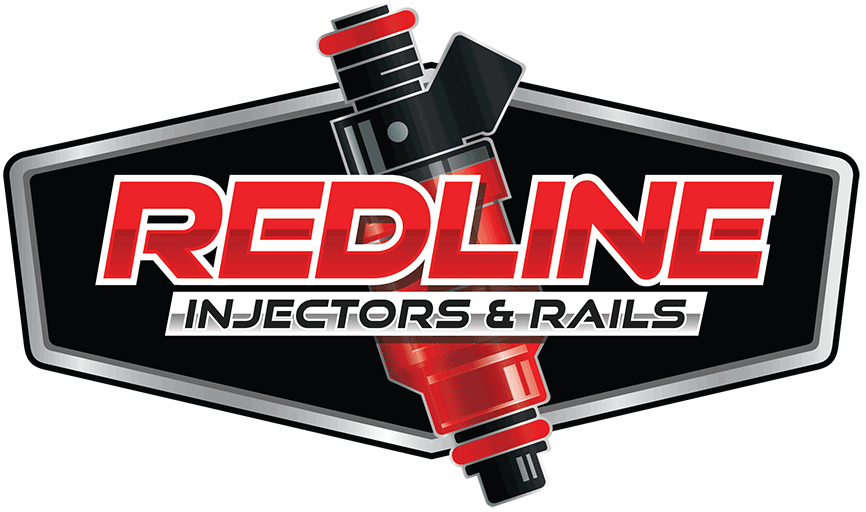Saturated and Peak & Hold are two types of fuel injectors that differ in how they are driven (electrically controlled) by the engine’s electronic control unit (ECU). The main difference between the two lies in how the injector solenoid is energized and controlled to open and close the injector.
Saturated Injectors (Also known as “Standard” or “Low Impedance” Injectors)
How They Work:
- Constant Voltage: Saturated injectors are driven by a constant voltage (usually 12V) from the ECU. When the ECU sends the signal to the injector, it applies a constant voltage, and the injector solenoid is energized to open.
- Full Power: These injectors operate with full power continuously while the injector is open. Once the ECU turns off the signal, the injector closes.
- Resistor: Saturated injectors usually have a higher impedance (typically around 12–16 ohms), which allows the current to flow at a stable rate. The impedance prevents excessive current flow and ensures that the solenoid inside the injector does not burn out.
Characteristics:
- Lower Current: Since they have higher resistance, saturated injectors require less current to operate.
- More Common in Older Vehicles: These types of injectors are typically found in older fuel-injection systems or in less performance-oriented engines.
- Simple Control: Since the injector is simply switched on or off, control is relatively simpler and requires less precision compared to peak-and-hold injectors.
Advantages:
- Simpler Control: Easier to manage with standard engine management systems.
- Less Power Consumption: Lower current draw means less strain on the vehicle’s electrical system.
Disadvantages:
- Limited Control Precision: Saturated injectors offer less fine control over the injection process, which can be a limitation in high-performance or high-precision applications.
Peak & Hold Injectors (Also known as “High Impedance” or “Low Impedance” Injectors)
How They Work:
- Two-Stage Voltage: Peak & hold injectors are driven by a two-stage signal:
- Peak (Initial Current): Initially, the ECU sends a high-voltage pulse to the injector, which allows a large amount of current to flow through the injector. This quickly opens the injector’s solenoid.
- Hold (Maintaining Open Position): Once the injector is open, the ECU reduces the voltage to a lower level, which keeps the injector open with a much lower current. This is the “hold” phase, where the injector stays open without requiring as much power.
Characteristics:
- Higher Precision Control: The dual-voltage system allows for more precise control of the injector’s opening and closing times, which is essential for fine-tuning fuel delivery, especially in high-performance engines.
- Current Control: The injector requires more sophisticated control than a saturated injector due to the need for the ECU to manage both the “peak” and “hold” phases of the injector’s operation.
- Lower Impedance: Typically, peak and hold injectors have a lower impedance (around 2–3 ohms), allowing them to handle the higher initial current draw in the peak phase.
Advantages:
- Better Control Over Fuel Delivery: The ability to fine-tune the injector’s behavior makes these injectors ideal for applications requiring precise fuel management, such as racing or high-performance engines.
- Higher Fuel Flow Potential: They can flow more fuel and are better suited for engines that require high fuel volumes (e.g., larger injectors for turbocharged engines).
Disadvantages:
- Complex Control: The two-stage electrical control requires a more sophisticated ECU and fuel management system.
- Higher Current Draw: While the peak phase requires a large initial current, the hold phase reduces the current, but overall, these injectors require more power to function, which can put additional load on the vehicle’s electrical system.
- More Expensive: Due to the additional components required for controlling peak and hold injectors, they tend to be more expensive than saturated injectors.
Key Differences: Saturated vs Peak & Hold Injectors
| Feature | Saturated Injectors | Peak & Hold Injectors |
|---|---|---|
| Voltage Control | Constant voltage (12V) | Two-stage voltage (high for peak, low for hold) |
| Current Draw | Lower current (due to higher impedance) | Higher initial current (due to lower impedance) |
| Impacts on Electrical System | Lower strain on the electrical system | Higher strain during the peak phase |
| Control Precision | Less precise control over fuel delivery | More precise control, ideal for high-performance engines |
| Typical Use | Older or less performance-demanding engines | High-performance engines, racing, or turbocharged engines |
| Cost | Less expensive | More expensive due to complex control system |
Conclusion:
- Saturated injectors are simpler and less expensive, suited for applications where precise control is not critical, and power consumption needs to be minimized.
- Peak & Hold injectors offer better control and higher precision, making them ideal for high-performance engines that demand exact fuel delivery, but they come with increased complexity and power requirements.
